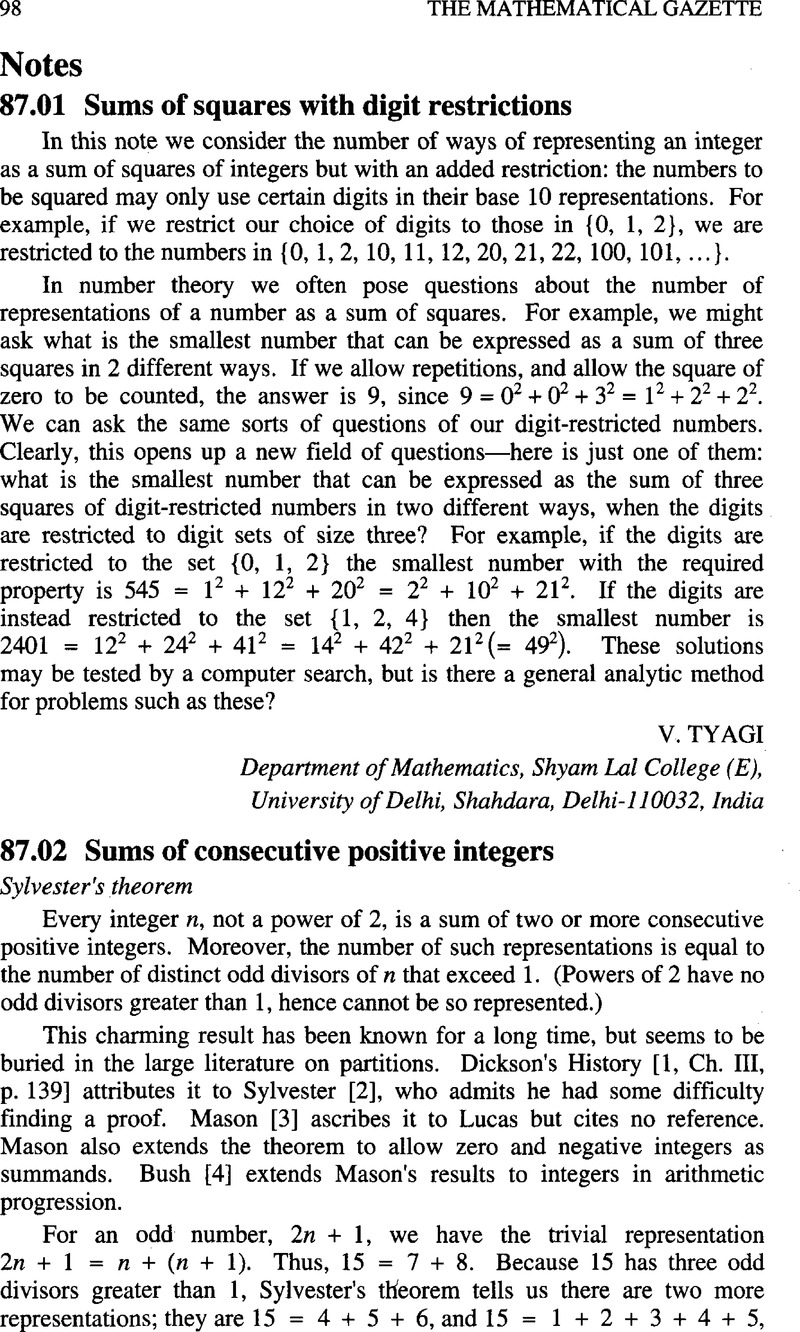Crossref Citations
This article has been cited by the following publications. This list is generated based on data provided by Crossref.
Nathanson, Melvyn B.
2017.
Analytic Number Theory, Modular Forms and q-Hypergeometric Series.
Vol. 221,
Issue. ,
p.
555.
Munagi, Augustine O.
and
de Vega, Francisco Javier de
2023.
An Extension of Sylvester’s Theorem on Arithmetic Progressions.
Symmetry,
Vol. 15,
Issue. 6,
p.
1276.
Ho, Chungwu
2024.
Sums of Consecutive Odd Integers and Pythagorean Triples.
Mathematics Magazine,
Vol. 97,
Issue. 5,
p.
559.



